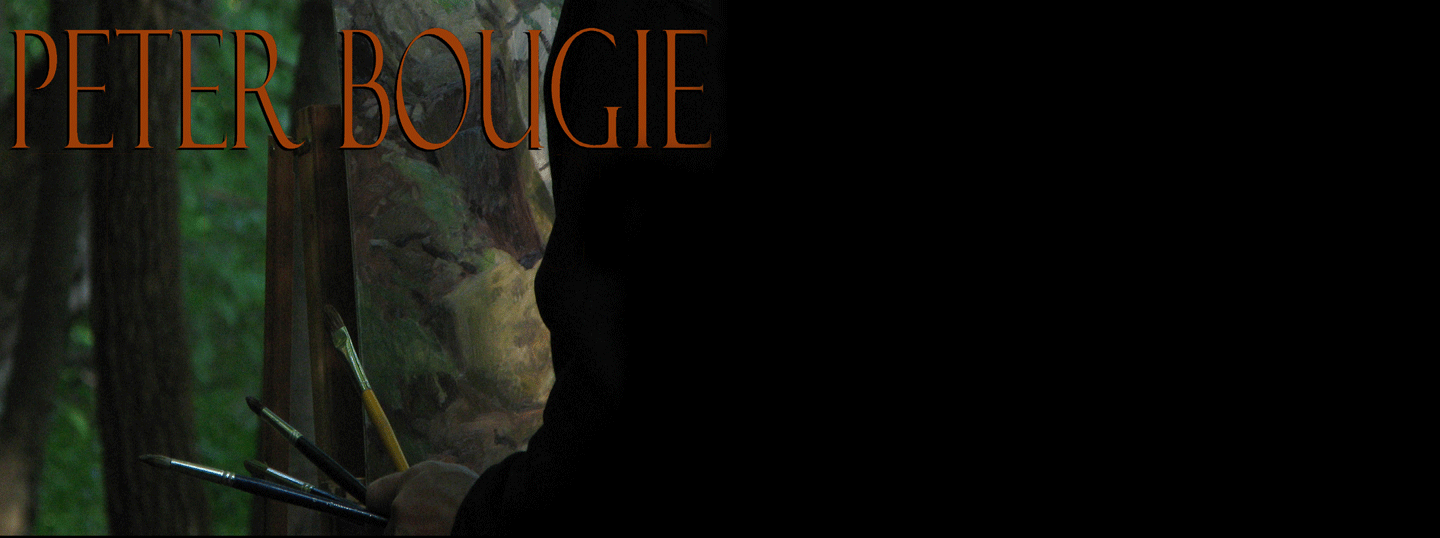 |
| Detail, Luke 2:19 private collection Copyright 2017 Peter Bougie |
Just below the bridge, three figures
are partially obscured by a rise in the landscape as they walk along the road.
It is Jesus with the two disciples on the road to Emmaus on the first Easter
Sunday. It is one of my favorite stories in the New Testament. The disciples
meet Jesus on the road, but they don’t recognize Him. They are discouraged
about the recent events in Jerusalem, of which Jesus feigns ignorance. It isn’t
until after inviting Him to stay with them for the evening, when He comes in
and breaks the bread at supper and then vanishes that they recognize Him. We
also may not recognize Jesus as readily as we think we will; but He is always
truly present in the breaking of the bread, the Eucharist.
What if you were a traveler in
Jerusalem on that first Good Friday? Say that the road you are traveling takes
you within sight of Golgotha, but not so close that you can see clearly what is
happening. You can tell it is one of those gruesome Roman executions; you
despise and respect them at the same time. You see the shapes of the crosses
with their victims attached rising above the heads of the people on the ground.
There are the sounds of agitated voices. There are glints of sunlight reflected
off metal spear tips, helmets and armor. You always shudder when you see those
Roman soldiers. You don’t ever like to be near them. What if there’s some
disturbance, and one of them takes it into his head to grab you? Good luck with
that. There is movement in the crowd, milling around a centurion on horseback,
stage managing the whole dirty affair. People come and go. More faint sounds of
calls – cheers or jeers? There was a breeze before, but it has died. The sky is
darkening, there is thunder, a faint smell of decay, and flies. You quicken
your pace, and feel all the effort it takes to do so.
 |
| Detail, Luke 2:19 private collection Copyright Peter Bougie 2-17 |
In the painting the crucifixion is
indicated by the presence of crosses on the top of the mountain above the city.
To the right, a derrick indicates that the place of death is also a place of
industry. It suggests the two are related. In Jesus’ time,
the Roman economy was based on slave labor. Slaves were commonplace. Servants
are featured in many of Jesus’ parables. In our own time, industry and
prosperity are still founded on cheap labor.
"Having loved his own who were in
the world, he loved them until the end." (John 13:1) But Easter Sunday
follows Good Friday. St. Augustine summed up Jesus’ ultimate act of love for us
in this passage from his Confessions: “The true Mediator…was
the Mediator between God and man, the man Christ Jesus, who
intervened between sinful mortals and the immortal Just One, himself mortal
like men, and like God, just. Thus, since life and peace are the compensation
for righteousness, he could, by a justice united with God, annul the death of
sinners now justified, since he willed to share death with them.”
“Rightly then I have firm hope that you
will heal all my infirmities through him who sits at your right hand and intercedes
for us.”
Continued in the next
post.
Scripture quotations
from Douay Rheims


No comments:
Post a Comment